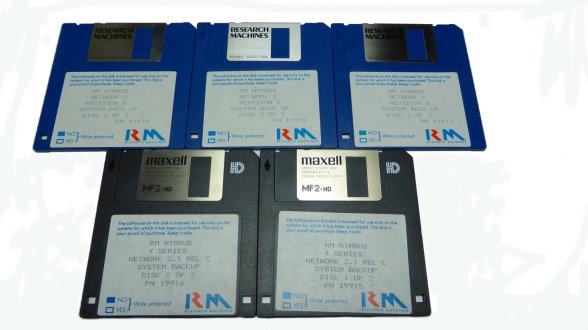 |
W E L C O M E | Version 3.00C |
RMNET NETWORK |
||
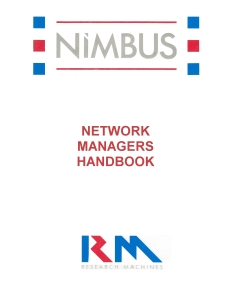 |
RMNet was Research Machines' own network operating system. Based upon Microsoft' MS-NET A resource sharing system which allowed a number of distributed microcomputer systems to share central resources such as large capacity hard disks, printers, programs and data. |
RMNet was essentially an early, quite primitive, but functional resource sharing system with a simple user authentication system wrapped around it. The 2 functions operated somewhat independently of each other.
The stations would get their boot operating system files via the network; this was MS-DOS 3.10 and included the logon screen binary file. Bundled with this selection of files was users.net, an obfuscated file containing usernames and passwords. It also contained the list of network shares (offers) and their passwords (set automatically by the system and only editable in the offers text file) with a link to which shares each user got.
A good way to see what the passwords were for the individual shares was to watch the server boot up, as it printed them on screen!
Therefore users were simply authenticated by the individual local stations login binary against the local users.net file that it was given. It also meant that any user could technically connect to a particular share if they knew the share password (remember completely separate from the users passwords), easily viewable in the users.net file or on server boot screen.
The server master copy of the users.net file was in c:\mgr which was not the working copy, that resided in c:\network. On bootup of the server the master copy was copied to the live location. This meant that changes to users, e.g. creation or password changes etc would require a server reboot to become live, or a crafty batch file command!
The network server was attached to its stations by a 'high speed' networking interface and its associated cabling. In the case of RMNet this hardware was called Z-Net;
RM Z-Net I network interface is fitted to all Nimbus PC-186 network stations. It has a maximum bandwidth of 800k bits per second.
The Nimbus PC-186 was available without a Z-Net I interface (its unknown if that was for a certain market or just on early production) and an additional Z-Net I card could be purchased:
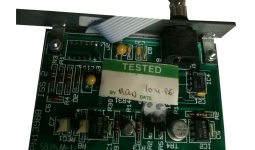
- 0.8 Mbits/sec serial speed
- NRZI encoded
- Processor Independant
- Multi-drop bus
- Opto Isolation
- 1200 meters maximum cable length
- 50ohm coaxial cable
- BNC T-piece connectors
RM Z-Net II network interface is fitted to all RM Net 2.2 servers and Nimbus AX, VX, PC-286/386 network stations. It has a maximum working bandwidth of 2M bits per second, but is switchable to the Z-Net 1 speed for compatibility.
RM Net uses a 50ohm co-axial cable to connect the station and servers together. The network is in the form of a bus, that is, a single sraight run with no branches. The cable connects directly to the back of the stations/server using a T-piece.
A terminator is required at the start and end of the run, which contains the 50ohm resistor.
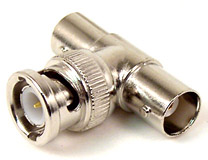
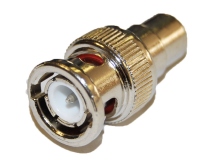
All cable connections are based on a simple BNC lock-together connectors, which are simple to install and require no maintenance.
The network stations booted from the network and sat at the login screen until presented with correct credentials.
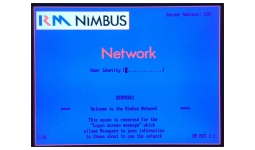
The message on the screen could be customised to individual requirements, however shown here is as it was as standard.
RM Net 2.0 Servers
RM Net 2.0 was an entry level network, with a Nimbus PC-186 being used as a network server.
The RM Net 2.0 server is supplied with a single 720k 3.5" floppy disk and an internal 20Mb hard drive.
RM Net 2.0 servers can have additional external hard disk drives added to them.
RM Net 2.0 servers are supplied with 1.5Mb of memory. 1Mb being used by the network operating system and the additional .5Mb being configured as a high speed disk cache.
A 12" monochrome monitor is included with all RM Net 2.0 servers.
All RM Net 2.0 servers are supplied with the Educational Network Software Library and network operating system already installed onto the hard disk. Backup copies of these programs are also supplied.
RM recommends that Nimbis PC-186 stations have a minimum of 1Mb of memory available, in order that the following applications will run:
|
|
RM Net 2.0 servers were equipped with a battery backed-up real time clock. This syncronises all stations which login to the server.
This was a function of the internal serial piconet card.
Printing across the network takes place via a spooling/queuing system. RM Net has a single spool queue per server, but the output from that queue can be directed to any one of 4 printers connected to the server.
RMNet 2.0 servers are fitted with one RS232C interface(an internal Piconet module), a TTL level RS232 interface and a parallel printer port as standard.
RM recommended the use of parallel printers for networks, since parallel printers are generally faster and lower cost than serial devices.
Additional parallel and RS-232 serial interfaces were available.
RM Net 2.0 was a low cost, full featured network system, supporting the full range of Nimbus PC-186 stations and disk based Nimbus AX and VX stations.
All RM Net servers supported a maximum of 48 stations. However, performance needs and the capacity of particular server configurations made the practical number of stations a server could support rather less than the maximum.
As a guide, RM recommended that RM Net 2.0 should not be considered for applications which call for greater than 10 stations in total.
RM Net 2.0 supported diskless PC-186 stations. It did not support diskless Nimbus AX of VX models.
Nimbus AX and VX stations could be used with an RM Net 2.0 system, but it did require the purchase of some additional software. The X-on-PC package contained a copy of the network operating system disk needed by the X Series stations to access the RM Net 2.0 server.
RMNET 2 File Structure |
|
| C:\ | C:\NETWORK |
COMMAND COM 22677 15-05-85 0:00 |
CHKNET EXE 698 15-05-86 12:00 MINSES EXE 1583 15-05-86 12:00 NET EXE 8586 15-05-86 12:00 NETBIOS EXE 19066 1-12-86 10:39 NETGO BAT 54 8-12-86 12:04 NETLINK COM 5200 21-01-87 14:59 NETLINK EXE 21592 21-01-87 15:01 OFFERS 452 8-12-86 12:11 PRTSC EXE 1128 1-12-86 9:39 PSPRINT EXE 5600 15-05-86 12:00 REDIR EXE 23831 1-12-86 9:40 SERVER EXE 42730 20-05-87 16:33 SETNAME EXE 3406 10-09-86 11:41 SHARE EXE 7902 3-06-85 15:58 SYSMESS TXT 175 2-09-86 12:30 USERS NET 9871 8-12-86 12:04 XPORT EXE 17168 21-05-87 10:55 MSNET INI 448 12-12-86 14:48 |
RMNET 2 File Structure |
|
| C:\MGR | C:\PUBLIC |
AUTOEXEC BAT 24 29-08-86 16:07 |
APPEND COM 1725 15-05-86 12:00 ASSIGN COM 1509 15-05-85 0:00 ATTRIB EXE 7438 15-05-85 0:00 AUTOEXEC BAT 104 3-09-86 12:14 BACKUP EXE 21720 15-05-85 0:00 CHKDSK EXE 9296 15-05-85 0:00 COMMAND COM 22677 15-05-85 0:00 CONFIG EXE 54608 4-03-86 15:03 DEBUG EXE 15364 15-05-85 0:00 DISKCOMP EXE 27168 24-10-85 8:57 DISKCOPY COM 1409 15-05-85 0:00 DVERIFY EXE 23216 24-10-85 12:47 EDLIN EXE 7122 15-05-85 0:00 EXE2BIN EXE 2816 15-05-85 0:00 FC EXE 14576 15-05-85 0:00 FIND EXE 6403 15-05-85 0:00 FORMAT EXE 9310 23-01-87 16:35 GET BAT 1093 12-12-86 15:59 HARDDISK EXE 24272 24-10-85 13:36 JOIN EXE 8956 15-05-85 0:00 LABEL EXE 2750 15-05-85 0:00 LOCAL BAT 136 31-07-86 14:10 MENU EXE 31184 24-11-86 10:01 MENUONE MCD 2357 20-01-87 14:11 MENUTWO MCD 3848 20-01-87 14:02 MORE COM 266 15-05-85 0:00 MSNET INI 307 12-09-86 11:50 NAME HLP 311 15-05-86 12:00 NET EXE 8586 15-05-86 12:00 NET HLP 613 15-05-86 12:00 NETDSK EXE 29040 17-12-86 12:20 PICONFIG EXE 52720 17-10-85 16:26 PRINT EXE 7448 29-07-85 15:25 PRINT HLP 584 15-05-86 12:00 PRINTER EXE 1044 6-08-86 15:28 PRINTER1 BAT 279 9-12-86 16:18 PRINTER2 BAT 279 9-12-86 16:18 PRINTER3 BAT 279 9-12-86 16:18 PRINTER4 BAT 279 9-12-86 16:18 PRINTQ EXE 6584 3-06-85 15:58 PUT BAT 725 12-12-86 16:06 RECOVER EXE 3895 15-05-85 0:00 RESTORE EXE 20156 15-05-85 0:00 REUSE EXE 7372 1-12-86 9:37 SETDD BAT 17 22-05-85 17:38 SETNAME EXE 3406 10-09-86 11:41 SHARE EXE 7902 3-06-85 15:58 SORT EXE 1664 22-05-85 9:36 STEED BAT 203 12-11-86 12:43 SUBST EXE 9910 15-08-85 9:21 SYS EXE 2671 31-05-85 12:11 USE EXE 4764 3-06-85 16:00 USE HLP 888 15-05-86 12:00 WELCOME BAT 207 25-11-86 15:05 LINK EXE 38422 15-05-85 0:00 POOL <DIR> 16-10-85 12:02 STEED <DIR> 16-10-85 12:02 WELCOME <DIR> 16-10-85 12:02 |
RM Net 2.0 Primary School Servers
This was a special version of RM Net 2.0 which had been configured to meet the needs of primary schools. The primary server is a Nimbus PC-186 with an internal 20Mb hard disk pre-configured with a special primary schools software library, containing the following packages;
|
Support was only provided for Nimbus PC-186 stations. No AX or VX stations here.
Installation of RMNET 2 is shown here:
RM Net 2.2 Servers
PC-186 based RM Net 2.0 servers had limited future hardware and software expansion and upgrade paths. Network systems were getting more sophisticated and placed greater demands on the power and flexibility of the server hardware. RM Net 2.2 X series Servers were designed to meet the needs of the future.
RM Net 2.2 utilised the Nimbus AX or VX microcomputer as a high performance and expandable server which would meet the growing needs of educational computing to-day and well into the future, or so it claimed.
All RM Net 2.2 servers were supplied with 2Mb of memory, some of which was used as a high speed disk cache. Additional memory, upto a maximum of 16Mb could be added to the server and used as additional disk cache space or for silicon disk.
RM Net 2.2 servers were equipped with one RS0232 serial and one Parallel interface as standard for connection to spooled printers.
A keyswitch was provided on the front of the X-series server, which isolated the server keyboard for added security and disabled boot up of the server into console mode.
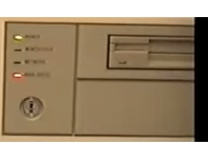
Again we had a battery backed real time clock to syncronise the stations time and date.
RM Net 2.2 supported multiple Z-Net cables. This feature allowed a single server to support upto 3 z-net cable segments. This was achieved by having three physical Z-Net interfaces in the server.
Each Z-Net segment was like a little network in its own right.
Here is the ISA Z-Net card fitted to AX/VX servers
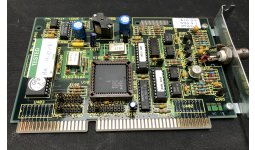
Again each server was upplied pre-installed with the network operating system and Educational Network Software Library.
RM Net 2.2 servers could be ordered with an optional, 60Mb cartridge tape backup unit, providing a safe and reliable mechanism for data backup.
RM Net 2.2 servers were available with either an internal 60 or 300Mb hard disk. There were 3 main models, based upon either the Nimbus AX with its 12Mhz 80286 processor or the Nimbus VX and its 16Mhz or 25Mhz 80386 processor.
For medium sized networks, supporting 20 stations, RM recommended the AX RM Net 2.2 server.
RM Net 2.2 supported all models of PC-186, AX and VX as stations.
PC-286 and PC386 stations required an additional software support package.
A single RM Net 2.2 server could only support a maximum of 48 stations, regardless of the total Z-Net cards.
Heres a video of a VX server booting from itself
(i.e the server has been switched on without the startup floppy disk)

Progression to ethernet
During the production of the Nimbus range, technology progressed and Z-net was depreciated.
Nimbus PC-186 stations could be upgraded with the addition of an Ethernet card, shown here:
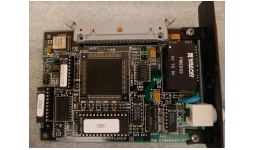
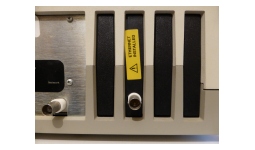
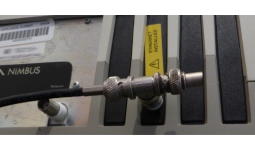
They had the ability to boot from this card and used the same station/server address as the
Z-net card was set to.
Ethernet and Z-net could not be mixed and so required connection to a VX or AX server with Ethernet.
The boot screen of a PC-186 is shown here:
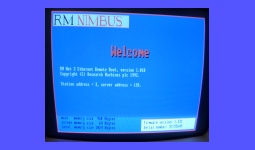
The AX/VX server card is shown here:
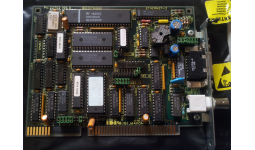
 |
Main Menu |
